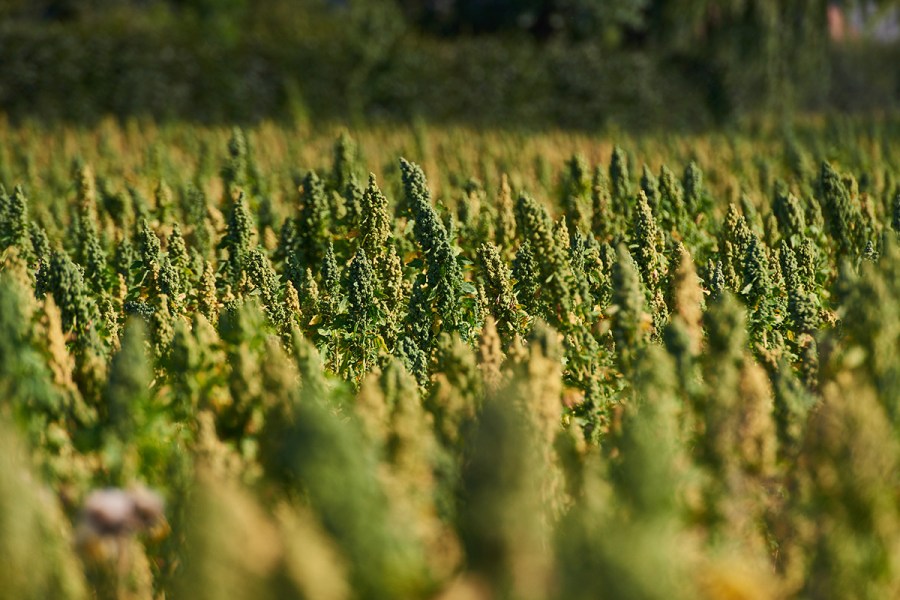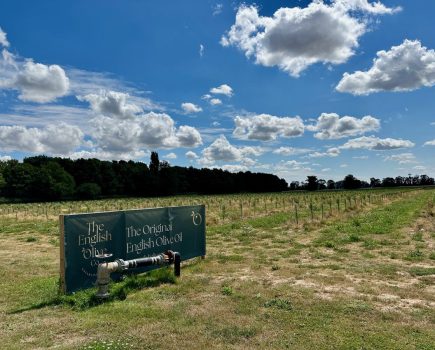Questionable in terms of pronunciation, but quinoa is the small-in-size superfood that’s packing a punch for UK growers in terms of reward. CPM finds out more.
“The rewards for growing quinoa are far better than traditional crops – if you can get it right.” – STEPHEN JONES
By Charlotte Cunningham
“Is it ‘keen-wah’? or ‘quin-oa’?” – the most important first question when penning an article about the nutty little grain which has soared in popularity during recent years.
Stephen Jones, director of the British Quinoa Company, laughs: “I use them interchangeably, depending on if I’m talking to farmers or consumers. Typically, with farmers I pronounce it ‘quin-oa’ as this is more akin to what they associate with quinoa in bird food mixes, for example.”
But however you pronounce it, from salads in M&S counters to a staple ingredient in nourish bowls in swanky health cafes, quinoa – for human consumption – is the protein-packed superfood that’s been sweeping the UK during recent times. “The declaration
of the International Year of Quinoa in 2013 was pivotal for the surge in popularity of the grain, and since then, it’s gradually increased in uplift year on year,” explains Stephen.
While it’s now found favour in UK arable fields, quinoa’s journey to market in this country has been a long one as the grain was originally grown exclusively in the Andean mountains. This made it unsuitable for growth in the UK climate – a challenge Stephen has had to overcome on his journey to become the leading- grower of quinoa grains in the UK.
UNIVERSITY PROJECT
“In terms of my background, I farm in North Shropshire with my parents and we’re completely arable. It was when I was at university at Harper Adams that I first had the idea of growing quinoa on the farm and essentially, wanted to see if we could produce it as an alternative crop.
“Very luckily, Harper allowed me to do a project on it which gave me the time to have a really deep dive into quinoa, to try and learn as much as I could. This was fundamental in developing the crop and working out exactly how we could produce it in this country.”
With the crop typically suited to the warmer climates of South America, Stephen says one of the biggest challenges was breeding a seed which was adapted to the cooler, wetter maritime climate. “The first thing to note, variety-wise, is that if you plant quinoa which you’ve bought off the shelf in
the supermarket, it won’t grow here. Likewise, if you plant the varieties we typically use for bird food, while that will grow, the seed isn’t edible for humans.”
With the limitations of these two types of quinoa in mind, Stephen partnered with a university in the Netherlands which majors on breeding specialist crops. “They were interested in quinoa, so we essentially told them what we were looking for and then they did the genetic work to breed those different traits in. As you can imagine, it’s a very slow process and took years to get an end result.”
BITTER SAPONINS
The biggest challenges with producing a UK-friendly variety were tweaking the germination characteristics and removing saponins from the crop, which are typically found in the bird food- type quinoa varieties, he explains.
“Sandoval quinoa is what’s typically grown for bird food mixes and is very bitter due to the saponins – natural chemical compounds found in the outer coating of quinoa seeds. They have a bitter taste because they serve as a defence mechanism against pests and microbes. While the latter is beneficial, obviously from a taste perspective, we had to breed something which didn’t have the saponins, but still grew well.”
Reflecting on some of the early varieties, Stephen says maturation date was also a continuous challenge. “Even if everything else worked well, maturity was always an issue – the crop wouldn’t be ready until the end of September, sometimes early October. It just wasn’t acceptable for us to have that sort of harvest date.”
In the second generation of varieties, the genetics were manipulated to pull forward the harvest date by two weeks, which Stephen says was the turning point in being able to get commercially- viable varieties in the field. “Even then though, if you get a normal distribution of harvest dates, some will be around early September, but some of the later planted crops don’t mature until the end of the month. So it still wasn’t ideal.”
Today, Stephen and his network of 30 contracted farms are now growing ‘third-generation’ varieties, which can be harvested from the last two weeks of August.
Looking at the typical production cycle for quinoa, planting begins in April with flowering in early summer – usually June – so the crop is then ready for harvesting during August/September.
As such, it fits well within most places in a typical rotation and can be grown every four years, he explains. “The caveat to that would be that I’d avoid growing it following oilseed rape as the volunteers can be so vigorous.” Despite the small seed size, no specialist equipment is required for planting or harvesting, provided drills are geared up for planting smaller seeds, explains Stephen. “They’re small but not tiny; they’re actually only slightly smaller than spring OSR. So as long as you can drill small seeds, you’ll be able to drill quinoa.
“What is critical though, is using a drill that can sow to a precise depth, as this is really important for germination, and of course, going into warm and moist conditions.”
In terms of crop nutrition, quinoa is a nitrogen hungry plant, says Stephen. “That would typically be the biggest crop cost. It may require a little P and K too, as well as applications of micronutrients, but this is very typical with what you’d expect for a traditional arable crop.”
With no herbicides approved for use on quinoa in the UK yet, using alternative methods of weed control during the production cycle are vital for yield. “The varieties we grow now are more vigorous which definitely helps, but we do rely on cultural methods like stale seed beds and avoiding growing quinoa on land which is heavily burdened with weeds,” explains Stephen.
DRYING PROCESS
After harvesting, the drying and storage of the crop is arguably one of the most important parts of the process. “Quinoa deteriorates quite quickly if it’s not dried rapidly, so it has to be dried as soon as it comes in off the field. It always has to be dried, there are no situations where it shouldn’t be, really.
“Once this is complete, it has to be put into store with air going through it, and then it’s just a case of awaiting collection to go for processing.”
As for marketing the crop, while the price per tonne varies year-on- year, Stephen says growers can expect in the region of £700/t for this superfood grain. He’s also received recent confirmation from the RPA that the crop can fit into two SFI schemes – AHW10 (low input harvested cereal crop) and CIPM4 (no use of insecticide on arable crops and permanent crops) – offering another opportunity to capitalise on growing quinoa.
“The rewards for growing quinoa are far better than traditional crops, if you can get it right. But there is that level of risk – so if you’re interested in growing it, I think you have to understand you may have a great harvest one year and a poor one the next, but it does average itself out. It’s a crop with great potential.”
This article was taken from the latest issue of CPM.
For more articles like this, subscribe here.
Sign up for Crop Production Magazine’s FREE e-newsletter here.




